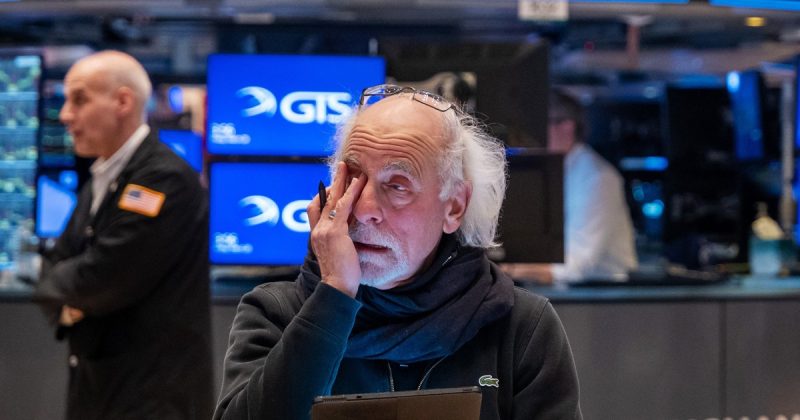
Monday’s market open saw a significant downturn, with investors reacting to the looming threat of President Trump’s “Liberation Day” tariffs, scheduled for announcement on Wednesday. The broad S&P 500 dropped 1.3%, the tech-heavy Nasdaq fell 2.3%, and the Dow Jones Industrial Average shed 0.7%. This follows Friday’s already dismal performance, the second-worst day of the year, fueled by inflation concerns and anxieties surrounding a potential slowdown in AI investment.
Weekend reports suggested President Trump was leaning towards a highly punitive tariff regime targeting most US trading partners. This was confirmed by the President himself in remarks aboard Air Force One, stating that the tariffs would “start with all countries.” The market’s response reflects a growing unease about the potential economic consequences of such a sweeping policy.
The S&P 500 has now lost roughly 5% of its value for the year and approximately 6% since Trump’s November election, reaching levels last seen in September. The Nasdaq’s decline is even more pronounced, down 10% year-to-date and about 9% since the election. This downward trend is setting the stage for the worst quarterly performance in three years.
Unlike his first term, President Trump has shown less sensitivity to investor concerns and market reactions. He has largely dismissed the substantial opposition to his tariff plan from the business community, even as the mere anticipation of higher duties is already leading businesses and consumers to brace for an economic downturn. In a recent interview with NBC News, Trump stated he was unconcerned about potential price increases from automakers due to the tariffs.
Adding to the anxieties is the growing threat of stagflation – a combination of high inflation and slow economic growth. A CNBC survey of economists predicts first-quarter GDP growth of just 0.3%, significantly lower than the 2.4% growth seen in the first quarter of 2024. Goldman Sachs has downgraded its first-quarter GDP estimate to a mere 0.2% and its full-year estimate to 1.5%, raising the probability of a recession to 35%. The firm attributes this largely to the impact of more aggressive tariffs and weakening economic confidence.
Deutsche Bank economists estimate that if Trump’s tariffs remain in place, the US tariff rate would reach its highest level since World War II. Despite this dire outlook, the Trump administration remains steadfast in its approach. Vice President JD Vance echoed Trump’s claims that the US has been a global “piggy bank,” inaccurately suggesting a decline in middle-class wages.
The market’s current state reflects a confluence of factors, with Trump’s tariff announcement serving as the latest catalyst in a series of concerning economic indicators. The coming days will be crucial in determining the full extent of the market’s reaction and the ultimate impact of this bold policy decision.










